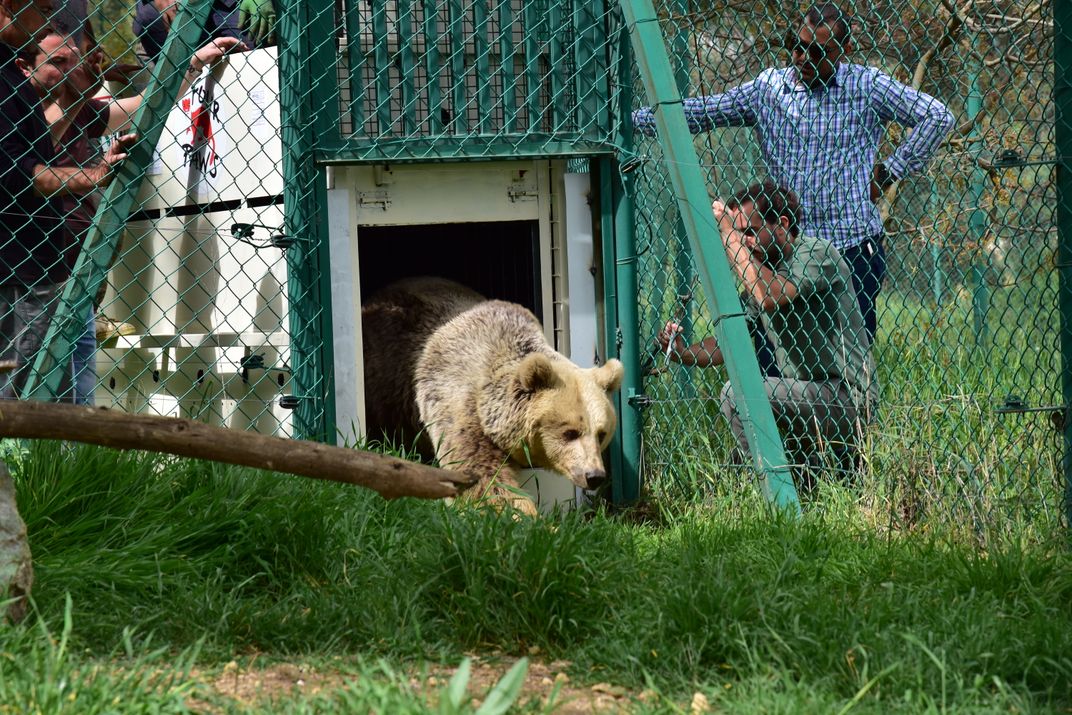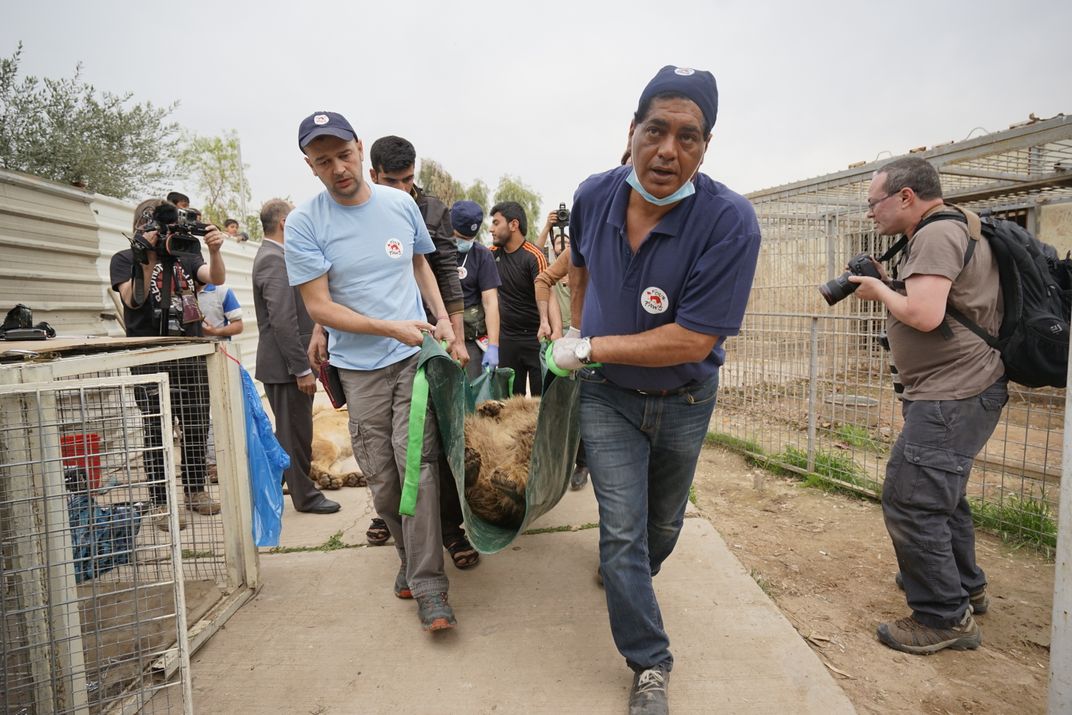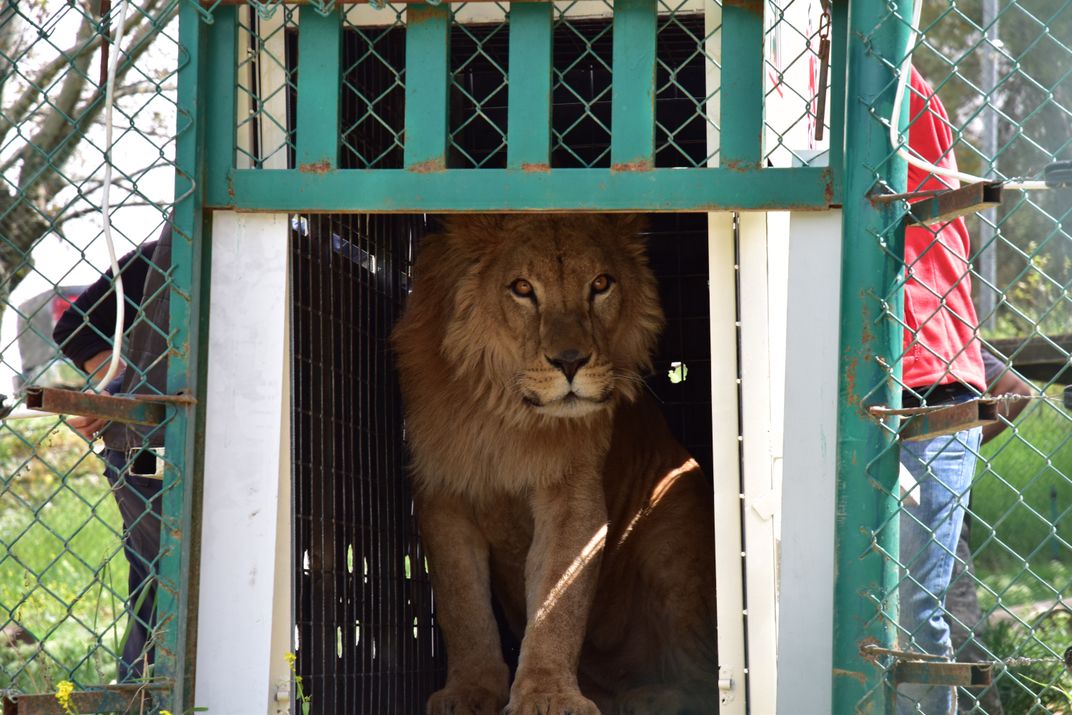Last Surviving Animals of Mosul Zoo Transported to Safety
Lula the bear and Simba the lion have been evacuated to a wildlife shelter in Jordan
When ISIS militants invaded the city of Mosul, Iraq, in 2014, they established a base at the Montazah al-Morour Zoo, which sits on the eastern side of the Tigris River. Of the approximately 40 animals that lived in the zoo, almost all have perished during ongoing fighting between ISIS and the Iraqi army. But after a daring rescue operation, Morgan Winsor reports for ABC News, a response team was recently able to evacuate the zoo’s last survivors: Lula the bear and Simba the lion.
Veterinarians affiliated with Four Paws International, an animal welfare organization, have transported Lula and Simba to a rehabilitation shelter in Amman, Jordan. The animals' rescue marks the successful conclusion of a multi-stage mission that often seemed doomed to fail.
When the vets first entered the Montazah al-Morour Zoo in late February, they found the facility in a dire state. Nearly all of the animals that once lived there—among them lions, exotic birds, monkeys, and rabbits—had died. Some had been killed in the crossfire, others had starved to death. Lula and Simba were trapped in cages piled with rubble, according to Four Paws’ website. They were malnourished and their teeth were decaying. Lula had pneumonia. Simba was suffering from a joint condition.
The rescue team, led by veterinarian Amir Khalil, gave the animals urgent medical care, cleaned their cages, and trained local volunteers to properly care for Lula and Simba’s needs. One month later, the team returned to Mosul with a plan to evacuate the animals. But, as Rana F. Sweis reports for The New York Times, workers transporting Lula and Simba were detained at a checkpoint and asked to leave Mosul. The animals were carted back to the zoo.
During another attempt Khalil and his team were held at a checkpoint for nine days before Lula and Simba were permitted to make their way to Jordan. It was a stressful time for both the veterinarians and the animals, but Khalil tells Winsor that Iraqi soldiers manning the checkpoint tried their best to alleviate the situation for Lula and Simba. “I am very touched to have experienced the humanity of the civilian population as well as military,” he says. “Many of the soldiers shared their food with the animals.”
While Lula and Simba have now been evacuated to safety, approximately 400,000 human residents remain trapped in Mosul, according to Ulf Laessing of Reuters. Iraqi forces have made progress in their efforts to expel ISIS from the eastern part of the city, but bloody battles continue to wage in the west. ISIS fighters are known to use civilians as human shields. Last month, around 200 Mosul residents were killed by American airstrikes, launched in support of Iraqi counterterrorism forces.
During an interview with Sweis of The New York Times, Khalil said he has been criticized for focusing on saving animals when so many humans are suffering. But such comments don’t really faze him. “I like this kind of criticism,” he says, “because in my opinion humanity cannot be divided.”
“War rages on but all those fighting cannot ignore animals, put them in a cage, starve them to death, deprive them of water,” Khalil added.
Lula and Simba are now adjusting to their new accommodations at the rehabilitation center in Amman. “Animals who have lived in tiny cages for such a long time need weeks, and sometimes even months, to get to accustomed to a larger enclosure,” Four Paws explains on its website. According to the organization’s Facebook page, Four Paws is working to find long-term, peaceful homes for Lula and Simba.


